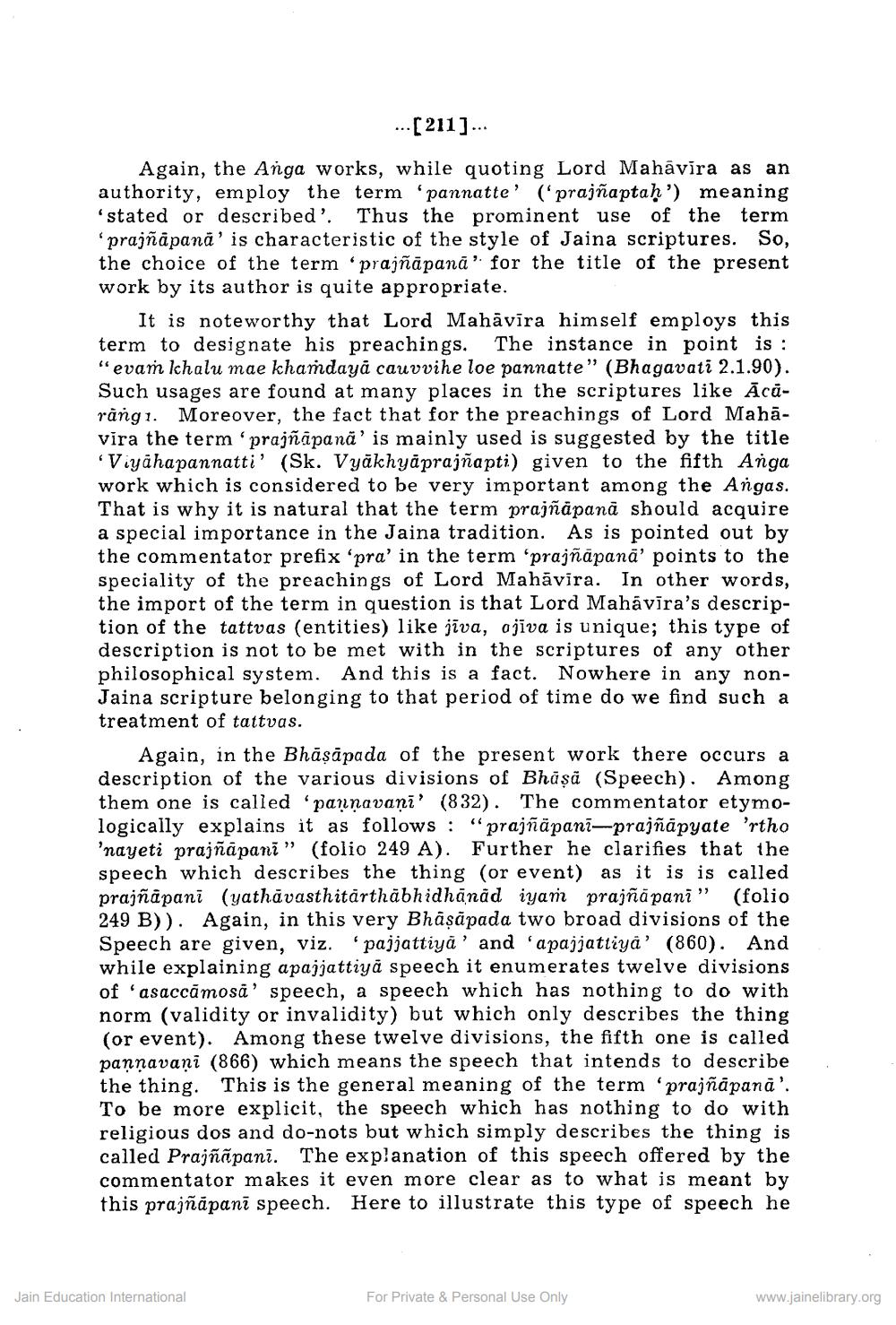________________
...[211]...
Again, the Anga works, while quoting Lord Mahavira as an authority, employ the term 'pannatte' ('prajñaptah') meaning 'stated or described'. Thus the prominent use of the term 'prajñāpanā' is characteristic of the style of Jaina scriptures. So, the choice of the term 'prajñāpanā" for the title of the present work by its author is quite appropriate.
It is noteworthy that Lord Mahavira himself employs this term to designate his preachings. The instance in point is: "evam khalu mae khaṁdaya cauvvihe loe pannatte" (Bhagavati 2.1.90). Such usages are found at many places in the scriptures like Acărangi. Moreover, the fact that for the preachings of Lord Mahāvira the term 'prajñāpana' is mainly used is suggested by the title 'Viyahapannatti' (Sk. Vyakhyāprajñapti) given to the fifth Anga work which is considered to be very important among the Angas. That is why it is natural that the term prajñāpanā should acquire a special importance in the Jaina tradition. As is pointed out by the commentator prefix 'pra' in the term 'prajñāpanā' points to the speciality of the preachings of Lord Mahavira. In other words, the import of the term in question is that Lord Mahāvīra's description of the tattvas (entities) like jīva, ajiva is unique; this type of description is not to be met with in the scriptures of any other philosophical system. And this is a fact. Nowhere in any nonJaina scripture belonging to that period of time do we find such a treatment of tattvas.
Again, in the Bhāṣāpada of the present work there occurs a description of the various divisions of Bhāṣā (Speech). Among them one is called 'pannavani' (832). The commentator etymologically explains it as follows: "prajñāpanī—prajñāpyate 'rtho ’nayeti prajñāpani (folio 249 A). Further he clarifies that the speech which describes the thing (or event) as it is is called prajñāpani (yathāvasthitārthābhidhānād igami prajñāpan” (folio 249 B)). Again, in this very Bhāṣāpada two broad divisions of the Speech are given, viz. 'pajjattiya' and 'apajjattiya' (860). And while explaining apajjattiya speech it enumerates twelve divisions of 'asaccāmosa' speech, a speech which has nothing to do with norm (validity or invalidity) but which only describes the thing (or event). Among these twelve divisions, the fifth one is called pannavani (866) which means the speech that intends to describe the thing. This is the general meaning of the term 'prajñāpanā'. To be more explicit, the speech which has nothing to do with religious dos and do-nots but which simply describes the thing is called Prajñapani. The explanation of this speech offered by the commentator makes it even more clear as to what is meant by this prajñāpani speech. Here to illustrate this type of speech he
Jain Education International
For Private & Personal Use Only
www.jainelibrary.org




